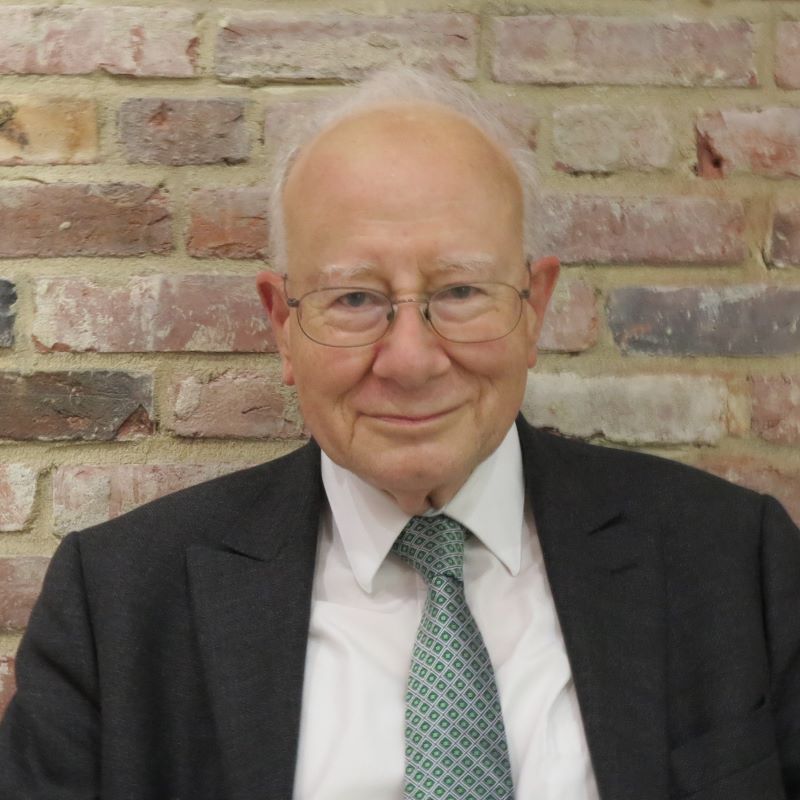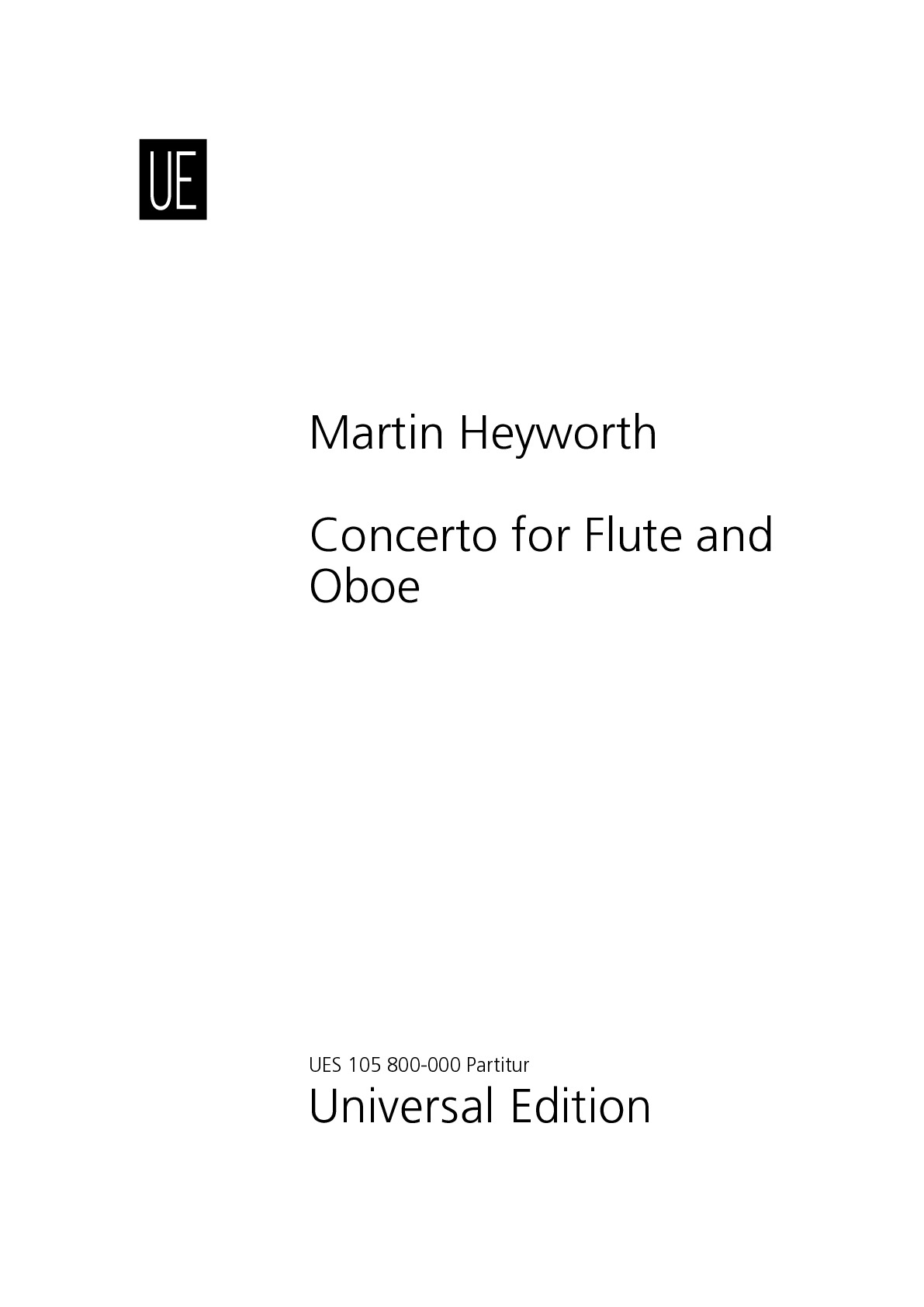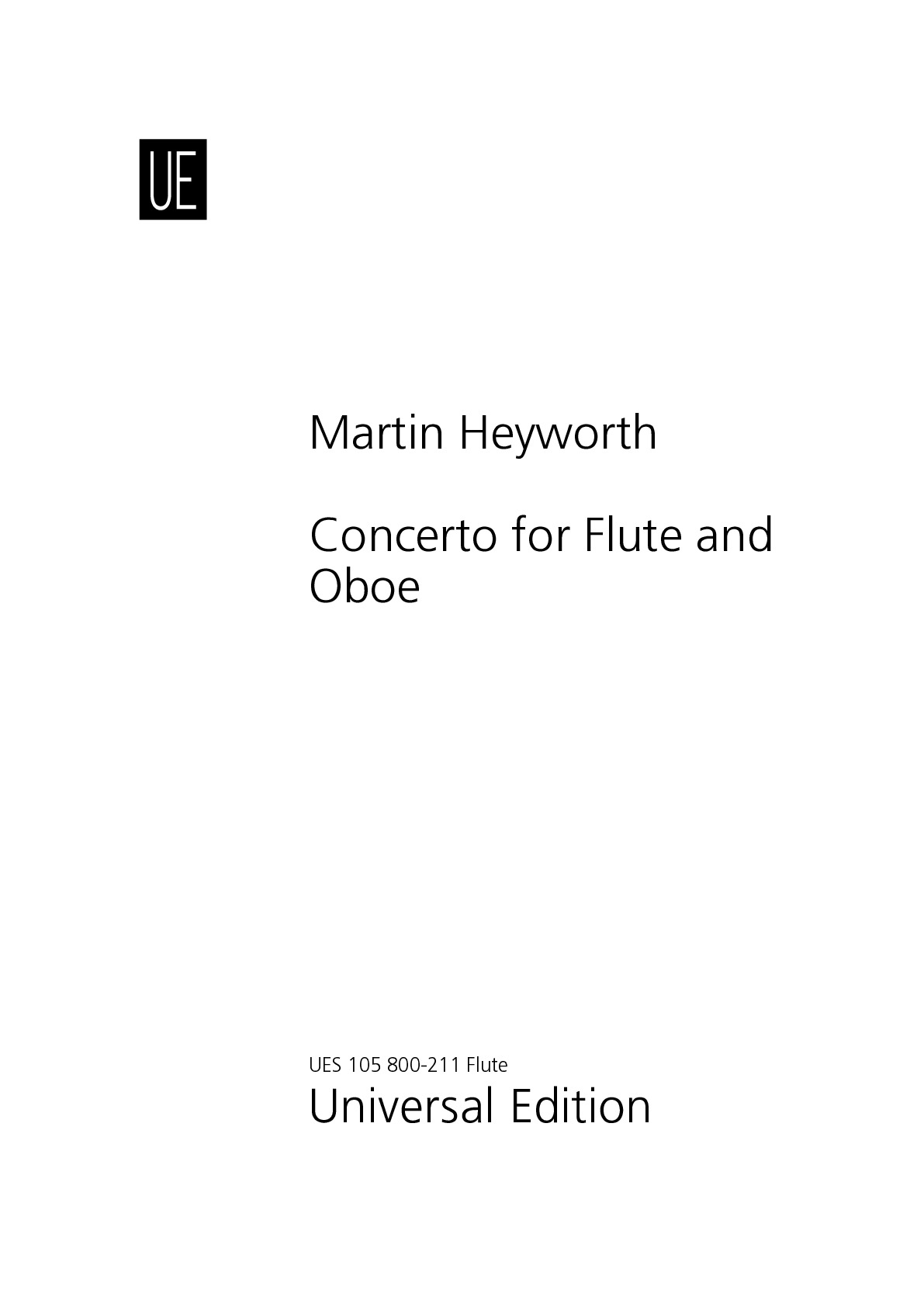

Martin Heyworth
Concerto for Flute and Oboe
Short instrumentation: 0 0 2 2 - 2 0 0 0, str
Duration: 7'
Solos:
flute
oboe
Instrumentation details:
1st clarinet
2nd clarinet
1st bassoon
2nd bassoon
1st horn in F
2nd horn in F
violin I (6 players)
violin II (5 players)
viola (4 players)
violoncello (3 players)
double bass (2 players)
Concerto for Flute and Oboe
Printed/Digital
Translation, reprints and more

Martin Heyworth
Concerto for Flute and OboeType: Dirigierpartitur

Martin Heyworth
Flöte (Concerto for Flute and Oboe)Type: Solostimme(n)

Martin Heyworth
Oboe (Concerto for Flute and Oboe)Type: Solostimme(n)
Work introduction
This concerto was written in 2020-2021; some minor revisions were made in 2023. The work is the first of four concise concertos for two solo instruments and chamber orchestra dating from 2020-2024. Of the three movements, the two outer ones are fast movements in A major, flanking a central movement in the overall key of F minor. The orchestration includes two clarinet parts of comparable prominence to the solo flute and oboe parts.
Some of the thematic material revisits that in other works by the present composer. Themes in the first movement date back to piano improvisations by the composer in the mid- 1960s, although those ideas had not been used in a completed work before the present concerto. The second movement uses ideas from the corresponding movement of the composer's F minor string quartet (Universal Edition, 2022), and follows a similar trajectory to that movement, of alternating slow (minor key) and fast (major key) sections. In the present concerto, the second movement is much shorter (85 bars) than the second movement of the F minor quartet (180 bars) and lacks a recitative-like section, such as is present in the quartet movement. The opening theme of the finale was used in music that the composer wrote for a wedding ceremony in Walton West, Pembrokeshire (Southwest Wales), and played on a small organ at that ceremony in September 1977. The middle third of this movement introduces a theme from the finale of an unpublished sonata for alto saxophone and piano by the composer (Sonata Bergamasca; dating from 2001); one presentation of this theme in the concerto involves a solo bassoon. A dotted theme introduced shortly before the end of the finale of this concerto is revisited, at somewhat greater length, in the first movement of a subsequently written (and currently unpublished) concerto for viola, harpsichord, and chamber orchestra by the present composer (2022-3).
In this concerto (and in the currently unpublished concertos from the early 2020s), the composer's now-developed proclivity for frequent, minimally prepared, key changes and use of the whole-tone scale are evident. The frequent key changes are a source of energy, and generate a style that is more 'concentrated' than that of the composer's earlier music. The result is a certain breadth, in works that, as measured by performance time, are quite concise.
